Sydney siege inquest: Inside the mind of the gunman Man Haron Monis
A LINDT cafe hostage tells how Tori Johnson was forced to his knees and wept as the gunman “prepared like an athlete”.
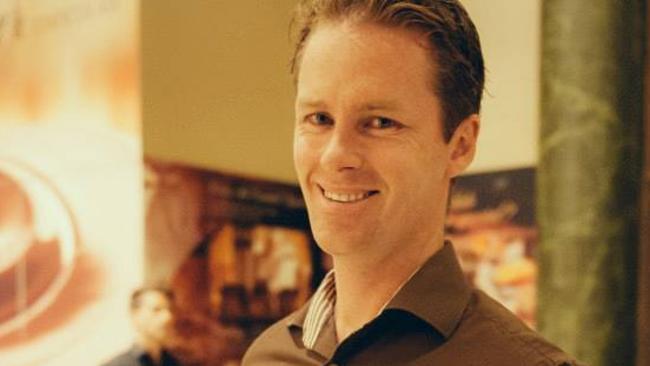
A LINDT cafe hostage has described how Tori Johnson was forced to his knees and started crying as the gunman “prepared like an athlete in preparation for an event” and shot him dead.
Louisa Hope, 53, told the inquest into the deaths arising from the Sydney siege that gunman Man Haron Monis used her and her elderly mother Robin as a human shield when he executed cafe manager Mr Johnson in the final moments of the ordeal.
Monis forced Ms Hope and her mother to stand on each side of him as he directed Mr Johnson to put his hands above his head and kneel near the front entrance of the cafe around 2am.
“Manager, come here now,” Monis reportedly told Mr Johnson.
Mr Johnson followed instructions as the gunman moved around the room while holding onto Ms Hope by her bra strap and her mother on his other side.
Ms Hope said Monis started “scanning back and forth” around the room “as if waiting for police to come in the cafe”.
“Then he went through this ritual, this thing where he started to breath heavier,” she said.
“He was psyching himself up, he was shuffling the gun on his shoulder up close to his face.
“He was making big gestures as if preparing himself. I could hear Tori crying but I could hear no words.”
Ms Hope said Monis continued to shuffle around the room with her and Robin on each side of him.
“He went through the process again of puffing and huffing and shaking his shoulders almost like an athlete in preparation for an event,” she said.
“Then he shot the gun and I felt the gunshot because he sort of bounced back a bit when he (fired) and that then hit me as well, his body moving like that.
“Tori fell forward with his hands still at his head.”
Ms Hope said no one in the cafe said a word immediately after Mr Johnson was shot.
“Monis sort of shook himself down a little bit like an adjustment, physically,” she said.
“Then he resumed his scanning thing he was doing (but didn’t say anything).”
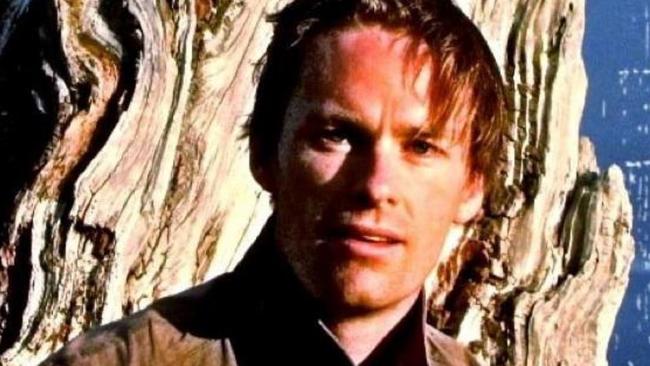
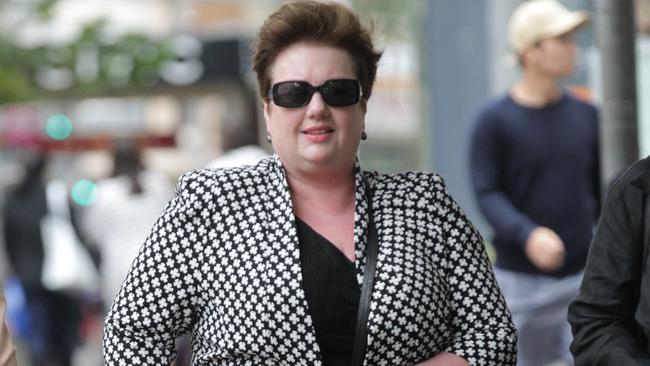
Moments later, the Tactical Operations Unit (TOU) stormed the cafe.
Footage played publicly for the first time at the inquest showed Ms Hope’s silhouette lit up by the flash ‘bangs’ as the 17-hour siege was dramatically brought to a bloody end.
“It started to become very bright in the room,” Ms Hope said.
“Lots of colours and noises and then it was all on.”
Ms Hope said she couldn’t remember how she detached herself from Monis before police shot him dead.
“I was standing next to him then somehow staggered, fell, ended up back over towards the bench seat,” she said.
The inquest heard that Mr Johnson chose to stay in the cafe when he had an opportunity to escape because he didn’t want to leave Robin alone.
Ms Hope said her mother and Mr Johnson had been sitting next to each other and “holding hands” for most of the day.
“My mother told me when I said to her, ‘Why didn’t you and Tori run out with me when I was trying to leave?’ and she said to me (that) she was indicating with her elbow, ‘You go, Tori,’ and Tori said (to her), ‘No, I’ll stay, I’ll stay.’”
The inquest is looking into the deaths arising from the siege, which began when the gunman entered the cafe on December 15, 2014. Mr Johnson and Katrina Dawson were killed in the siege, along with Monis.
Ms Hope used the final minutes of her testimony to praise former Lindt cafe worker Jarrod- Morton Hoffman — the youngest of the hostages — for saving her life.
“I would like to say that young Jarrod Morton-Hoffman was incredibly brave and showed great leadership on the day, beyond his 19 years. When the first hostages got out, his quick thinking directly saved my life,” she said.
“When I think about Tori it fills my heart and head. Tori Johnson stayed with my mother and I’m grateful,” she continued through tears.
Ms Hope said her mother wanted to be at the inquest to give evidence and “speak for Tori” but was in poor health and unable to do so.
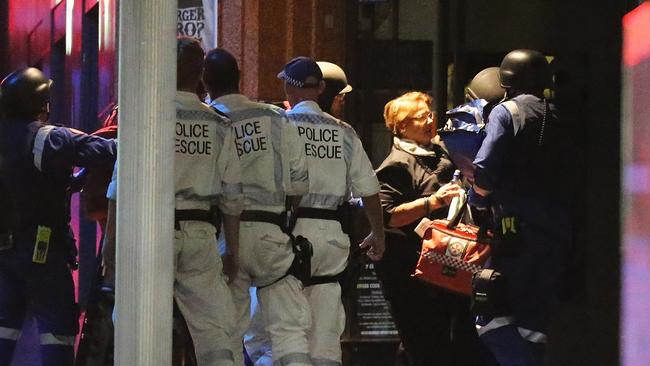
FEISTY HOSTAGE BACKCHATTED THE GUNMAN
Ms Hope, who suffers multiple sclerosis (MS) and has been medically retired since 2008, was the last of the surviving hostages called to the stand to give evidence at the inquest today.
Her mother Robin has not been scheduled to testify because of medical issues.
Ms Hope revealed her mother’s health had significantly declined over the past year but told of the “feisty” woman who showed aggression towards Monis during the ordeal.
“She was quite vocal in her objection to him and she said she wasn’t very happy with him,” Ms Hope told the inquest.
“She said something along the lines of ‘I’m a 72-year-old woman, how old are you?’
“She was very aggressive in her tone. Her fear response was anger.”
Ms Hope told counsel assisting Jeremy Gormly that the gunman responded to her mother’s question.
“He said ‘I’m 50 or I’m 52’,” she said.
Ms Hope said it was possible Monis said he was 60 or 62.
In her next exchange with Monis, Robin made several demands, according to her daughter.
“Mum stood up and said to him ‘I want to go to the bathroom and my daughter needs her medication’,” Ms Hope said.
“He said (to me) why do you need medication, Louisa?’
“I explained to him why I needed it. I told him that I needed medication for my MS. And then he wanted to know all about the MS so I told him.”
Ms Hope said she was stunned by the gunman’s curiosity relating to her condition.
“He asked me what it was and how you got it,” she said. “He was very interested in it.
“It seemed to be (he hadn’t heard of it) because he wanted the whole story.”
Monis allowed Robin to go to the bathroom and Ms Hope to take her medication.
Ms Hope told the inquest her mother later had a third exchange with Monis.
“I don’t recall what mum actually said to him but I’m very clear about what he said in return,” she said.
“He said, ‘Louisa take control of your mother’. I remember (Mum’s) tone. She was quite sharp with him, angry.”
Ms Hope explained it was usually a “challenge” to control her headstrong mother but that on this occasion, she listened.
“I said ‘Mum, you’re an old lady, be quiet and you must do as you’re told’. (And) she did.”
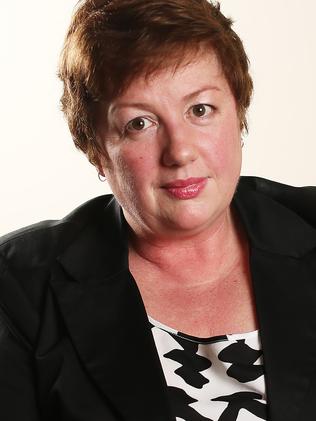
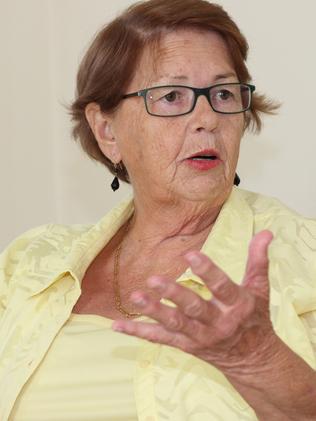
Earlier, Ms Hope told the inquest she was sitting next to Katrina Dawson, a mother of three who was later killed in crossfire, and joked with her about her “lovely shoes” just moments before the siege started to unfold.
“Katrina, Julie (Taylor) and Stefan (Balafoutis) were to my left,” Ms Hope said. “We had a conversation with Katrina about her beautiful shoes,” she said.
“We were all making a joke about how lovely they were, she thought she’d scuffed them.”
Ms Hope said she first became aware of the danger they were in when she noticed the doors were locked and Monis pulled out a shotgun and announced he was taking everyone inside the cafe hostage.
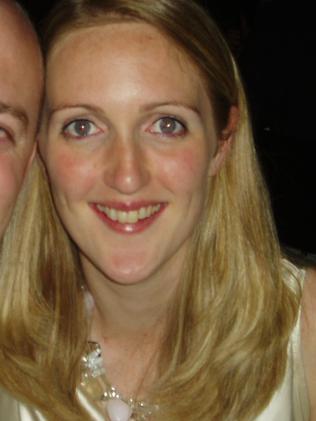
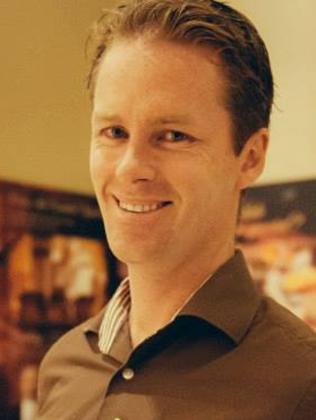
WHY IT WAS ‘ALMOST IMPOSSIBLE’ TO PREDICT MONIS
Monis was a “narcissist” with personality disorders but knew right from wrong and wasn’t clinically psychotic, a psychologist has told the inquest.
Psychologist and de-radicalisation expert, Kate Barrelle took the stand at the inquest this morning to provide an insight into the mind of the gunman.
Dr Barrelle said she believed Monis — who held 18 people hostage at gunpoint for 17 hours — had an “anti social personality disorder” and had been radicalised.
She said his “driver” for carrying out the siege was a result of his “psychological and ideological state” and “political purpose”.
“He probably thought wrong had been done to him first so he was retaliating in some righteous way,” Dr Barrelle said.
“I didn’t see any concerted effort from him to recruit (the hostages) ideologically to his cause.”
Dr Barrelle described Monis as a lone wolf with an atypical personality.
“He was a very narcissistic man who had very grandiose notions he was different and special,” Dr Barrelle said.
“If he were to die, in his mind it would have been an honourable and vindicating act.”
Several witnesses have told the inquest that Monis was unpredictable and, at times throughout the siege, would feign empathy for some of the hostages.
“Those exchanges would have been around wanting others to see him in a good light, serving narcissism,” Dr Barrelle said.
Dr Barrelle said Monis’ decision to avoid negotiations and contact with police and instead use hostages to relay his messages was about maintaining a sense of control.
“Through a personality lens, (it’s) a control thing. (It would have been) important for him to have staff running around for him (and) would have fed into a paranoid safety thing,” she said.
“Personality disorders don’t mean he’s unaware of what he’s doing or (that he can’t) tell the difference between right and wrong.
“He did not have impaired thinking according to any personality diagnoses.”
But according to Dr Barrelle, it would have been “almost impossible” to predict Monis’ plan to carry out the attack despite the gunman’s history of criminal charges and activity.
Barrister Phillip Boulten SC, who represents the family of Ms Dawson, pointed out that Monis was “showing no signs of reform or de-radicalisation in the lead up to the siege”.
“In fact in the period leading up to the terrorist attacks he was showing other signs he was a danger to people,” he said.
“In the period after he was convicted and pushed for writing offensive letters to the families of servicemen, he continued to show real interest in Islamic State.
“He wrote to the Attorney General of the country asking if it would be appropriate for him to be put in touch with the leader of IS.
“He was showing preoccupation with anti zion(ism) causes.
“I suggest to you that police security agencies, people who had the responsibility to keep us safe should have picked up he was … continuing to carry on with these ideological fashions.”
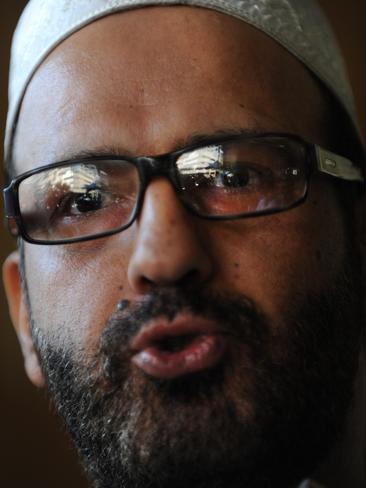
‘MAN HARON MONIS WAS A TERRORIST’
Mr Boulten described Monis as “a terrorist”.
“Whenever something happened that Monis didn’t like such as people escaping or the failure of the government to meet his demands”, he’d pull a gun out and point it at people and say ‘I’m going to kill people’ and he did,” Mr Boulten said.
“This conduct was undoubtedly a mixture of his personality defects or disorders and his very fixed, well entrenched, historically tracked, political, ideological and religious motivations and he was threatening lives and ultimately took a life for those reasons.
“In those circumstances he was acting like a terrorist, wasn’t he? He was a terrorist, wasn’t he?”
“Yes,” Dr Barrelle responded.
Mr Boulten said Monis had “no empathy for people in the cafe even when he was pretending to be nice to them”.
“When he was saying ‘I’ll give you a drink of water, or cracking jokes and asking them if they were all right or letting them lie on the floor when sick, that was all a plan where he would maintain control in the room.
“It was actually in its own way abusive of the people in the cafe, to go from being nice to threatening to kill, in its own way is its own form of torture, isn’t it?”
Dr Barrelle agreed with Mr Boulten, adding: “it’s a very effective way of destabilising people”.
“There’s no behavioural rule book for how a person behaves in a terrorist situation,” Dr Barrelle said.
“He did behave like a terrorist in that there was an ideological drive clearly aligned with his internal perceived association with Islamic State.”
The inquest has been adjourned until Thursday next week.
More witnesses, including police, will be heard at the inquest in coming weeks.




